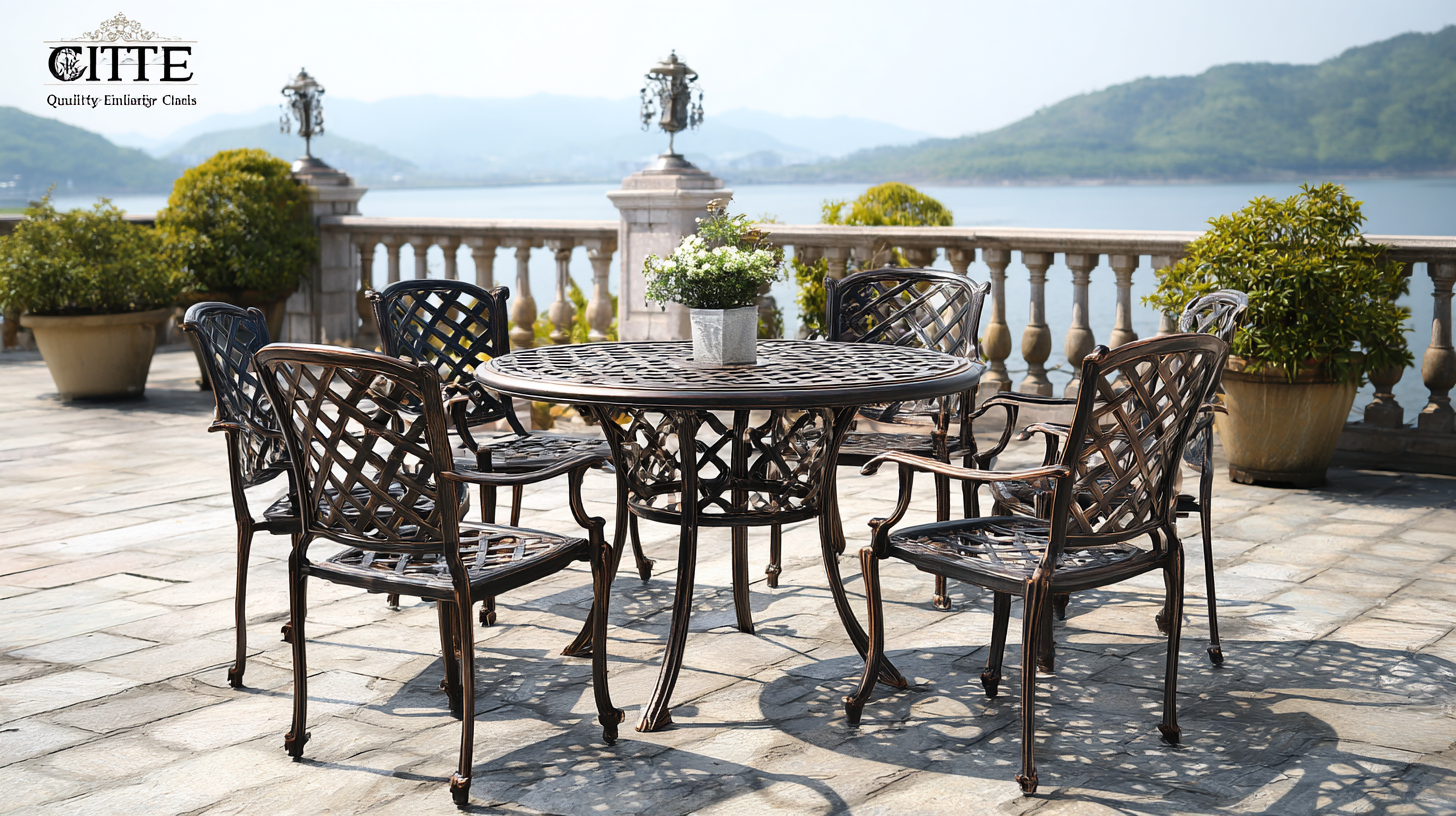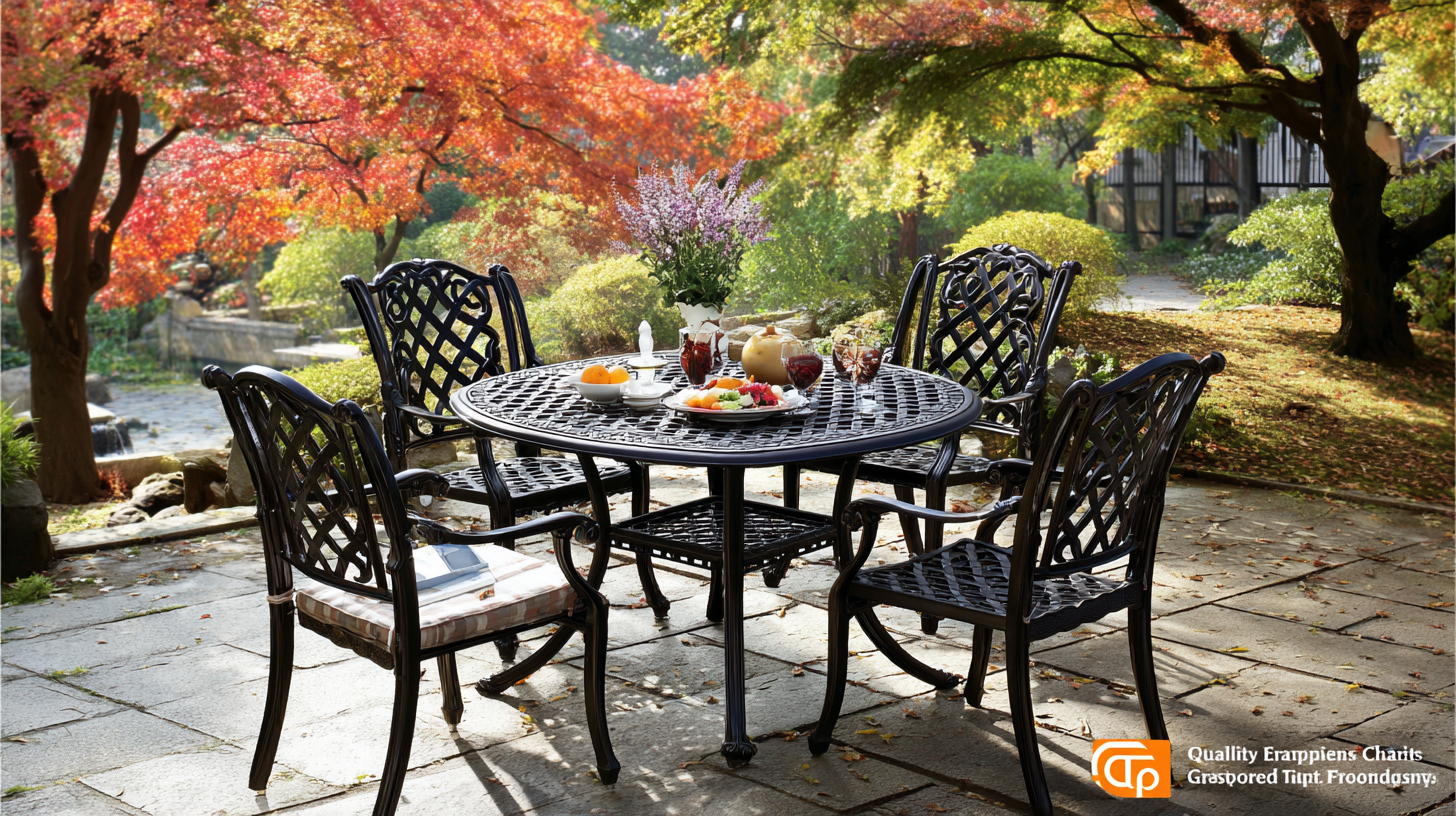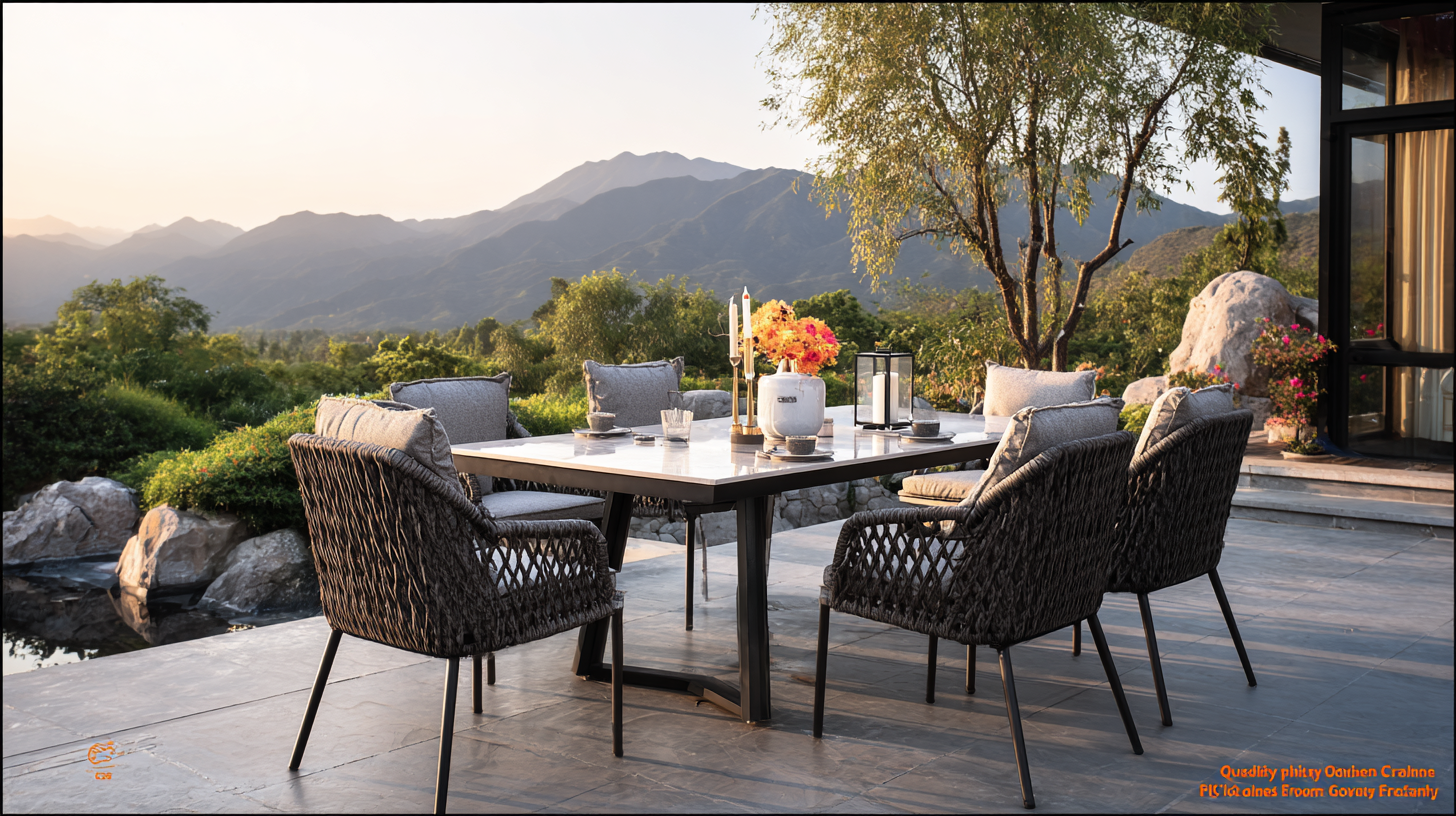Quality Outdoor Table And Chairs from Chinese Factories for Global Excellence
As global demand for outdoor living spaces continues to rise, the market for Outdoor Table And Chairs has witnessed significant growth. According to a recent report by Grand View Research, the outdoor furniture market is expected to reach USD 23.6 billion by 2024, growing at a compounded annual growth rate (CAGR) of 4.5%. This surge is largely fueled by consumer preferences shifting towards outdoor leisure and entertainment, prompting manufacturers to innovate in design and functionality. Chinese factories have emerged as key players in this sector, offering a diverse array of high-quality outdoor furnishings that cater to international standards. By leveraging advanced manufacturing techniques and sustainable materials, these factories are not only providing stylish Outdoor Table And Chairs but also ensuring affordability and accessibility for consumers worldwide. This blog will explore specific examples of how Chinese manufacturers are setting benchmarks for quality and excellence in outdoor furniture.

Understanding the Significance of Quality in Outdoor Furniture Manufacturing
The significance of quality in outdoor furniture manufacturing cannot be overstated, particularly as the global luxury furniture market continues its upward trajectory. Valued at $23.99 billion in 2024, the market is set to reach $37.34 billion by 2032, underscoring a growing demand for durable, aesthetically pleasing, and functional outdoor furnishings. As consumers become more discerning, the emphasis on high-quality materials and craftsmanship becomes paramount. This trend is prompting manufacturers, especially those in China, to enhance their production processes and product offerings to meet global standards.
Innovative companies are reshaping the outdoor furniture landscape, focusing on not only style but also durability and sustainability. The North American and European markets, for example, highlight this shift, as evidenced by substantial projected growth rates. As outdoor spaces gain prominence as extensions of living areas, the quality of furniture plays a crucial role in creating inviting environments. Consumers increasingly seek furniture that withstands the elements while elevating their outdoor experience, making quality the cornerstone of successful outdoor furniture manufacturing.
Exploring the Manufacturing Process of Outdoor Tables and Chairs in China
The manufacturing process of outdoor tables and chairs in China involves a variety of materials, each with distinct properties catering to different market demands. In the wooden furniture segment, hardwoods such as teak and eucalyptus are preferred for their durability and aesthetic appeal, while aluminum and stainless steel popularize the metal category for their lightweight nature and resistance to rust. Plastics, particularly resin and polyethylene, play a significant role in creating affordable and weather-resistant options for both residential and commercial use.

In terms of product categorization, the outdoor furniture market can be segmented into tables, chairs, dining sets, and other functional pieces like loungers and bar stools. The demand for dining sets is projected to rise significantly, particularly among residential users who seek to enhance their outdoor living spaces. According to industry reports, the global outdoor furniture market is expected to grow at a CAGR of 7% from 2025 to 2032, driven by increasing consumer interest in backyard entertainment and outdoor dining experiences.
Geographically, regions like North America and Europe are forecasted to lead in market share due to their established consumer base and increasing investments in high-quality outdoor furnishings. Conversely, emerging markets in Asia-Pacific are expected to see accelerated growth, fueled by rising disposable incomes and urbanization trends that encourage outdoor leisure activities. As Chinese factories enhance their manufacturing capabilities and quality standards, the competitiveness of their outdoor furniture offerings on a global scale is likely to improve significantly.
Key Features to Look for in High-Quality Outdoor Furniture
When searching for high-quality outdoor furniture, particularly tables and chairs, it's essential to consider several key features that can enhance your outdoor experience. First, the material used in the construction of the furniture plays a crucial role in durability and maintenance. High-grade wood and treated metals are popular choices, as they offer resilience against weather elements and provide aesthetic appeal. Additionally, the style of the furniture should align with your taste—whether opting for a modern sleek design or a more traditional rustic look, this choice can complement your outdoor space.

Another vital aspect to consider is comfort. Quality outdoor furniture should have ergonomic designs that support long hours of lounging or dining. Look for features like contoured seating and cushioning options that can withstand outdoor conditions. Moreover, the versatility of the pieces is also important; some collections come with modular designs, allowing for flexible arrangements that suit various outdoor activities. As the outdoor furniture market continues to expand, driven by increasing interest in outdoor living and leisure activities, investing in well-crafted items will ensure you enjoy style, comfort, and long-lasting performance for years to come.
The Benefits of Sourcing Outdoor Furniture from Chinese Factories
Sourcing outdoor furniture from Chinese factories presents a unique blend of benefits, especially in the context of evolving global trade dynamics. Despite the challenges posed by tariffs, Chinese manufacturers continue to be a critical player in the global furniture supply chain. Recent data indicates that China remains one of the top countries exporting furniture, with over $40 billion in exports in 2024-2025 alone. This dominance is not merely due to cost advantages but also reflects the extensive infrastructure and production capabilities that many factories have developed.
However, the current climate is shifting, as companies like Jin Chaofeng adapt to rising tariffs by relocating production to countries like Vietnam. This indicates a potential transformation in sourcing strategies as firms seek to mitigate the impact of tariff-induced price increases. Yet, these shifts also create opportunities; many Chinese factories are now more desperate for business, leading to more competitive pricing and improved negotiation conditions for global buyers. As the sector adjusts to these economic realities, it remains essential for businesses to stay informed about their sourcing networks and potential alternatives, ensuring they maximize quality while managing costs effectively.
Global Market Trends Impacting Outdoor Furniture Production and Design
The global outdoor furniture market has been witnessing substantial growth, with its size valued at approximately USD 53.27 billion in 2024. This upward trajectory is expected to continue, as projections indicate an increase from USD 56.00 billion in 2025 to an impressive USD 81.44 billion by 2035. Several factors are fueling this expansion, particularly the evolving consumer preferences for versatile and aesthetically pleasing outdoor spaces. The trend towards creating functional and stylish outdoor living areas has led to innovation in design and material usage, making outdoor furniture more appealing to a wider audience.
In addition, the camping furniture segment is also gaining momentum, with a projected market size of USD 6.89 billion by 2035, reflecting a compound annual growth rate (CAGR) of 7.1% from 2025. This growth is primarily driven by the increasing popularity of outdoor recreational activities, as more people seek comfortable and portable solutions for their adventures. Furthermore, the outdoor pet house and furniture market is set to experience a significant rise, estimating a value of around USD 3.4 billion by 2034, growing at a CAGR of 6.7%. This indicates a growing consideration for pets in outdoor furniture design, showcasing the market's adaptability to emerging consumer needs and lifestyle changes.
